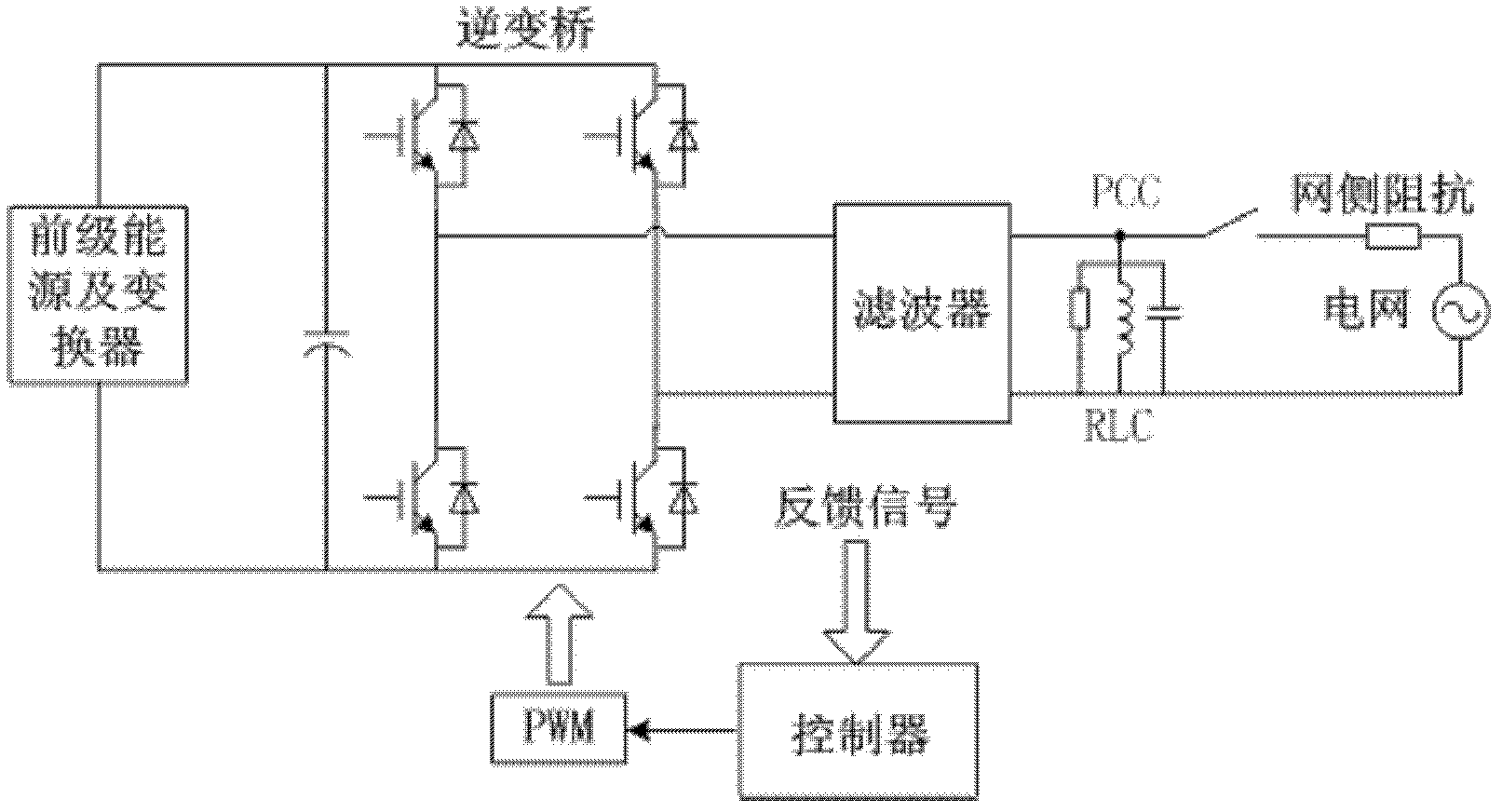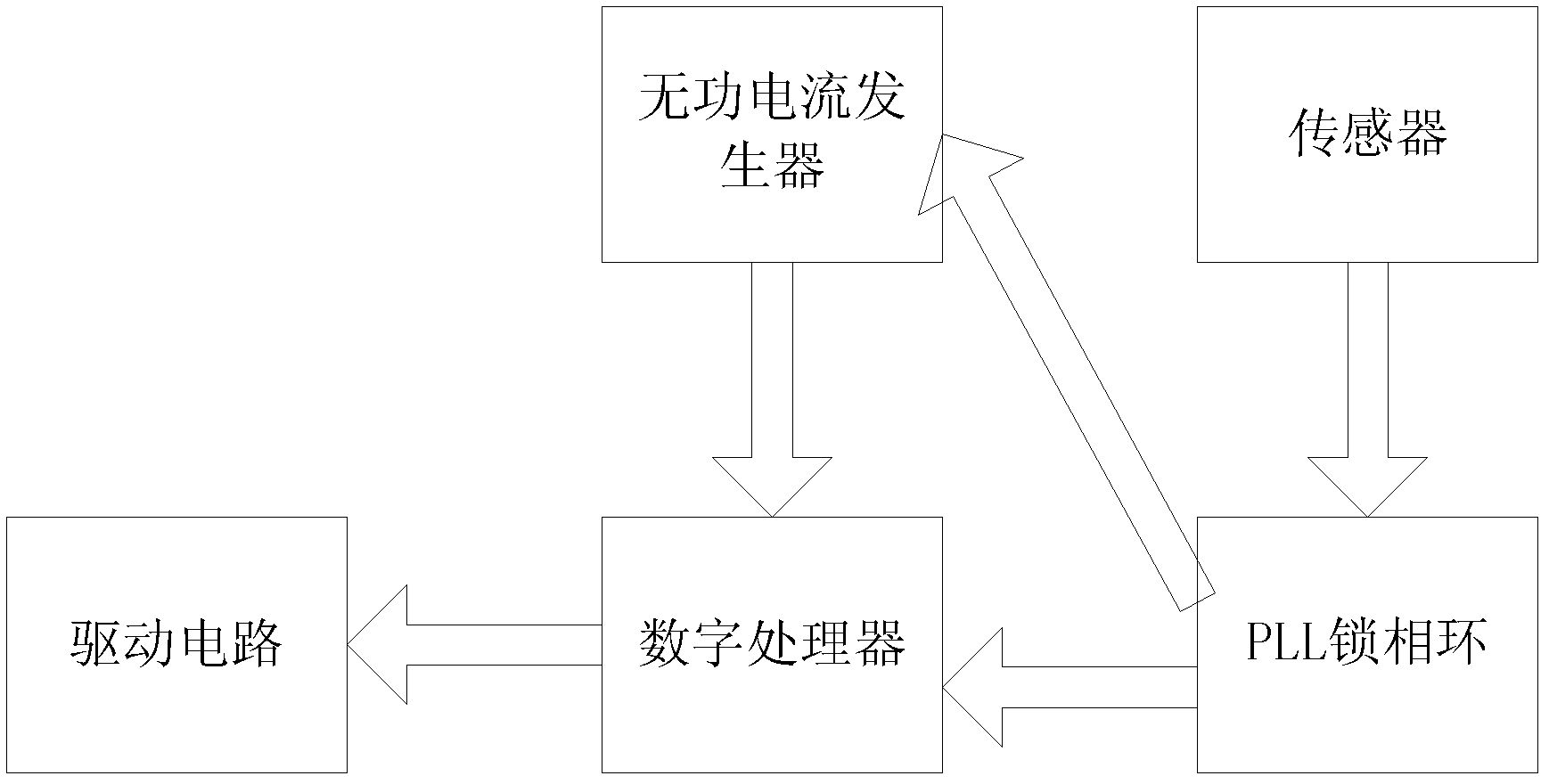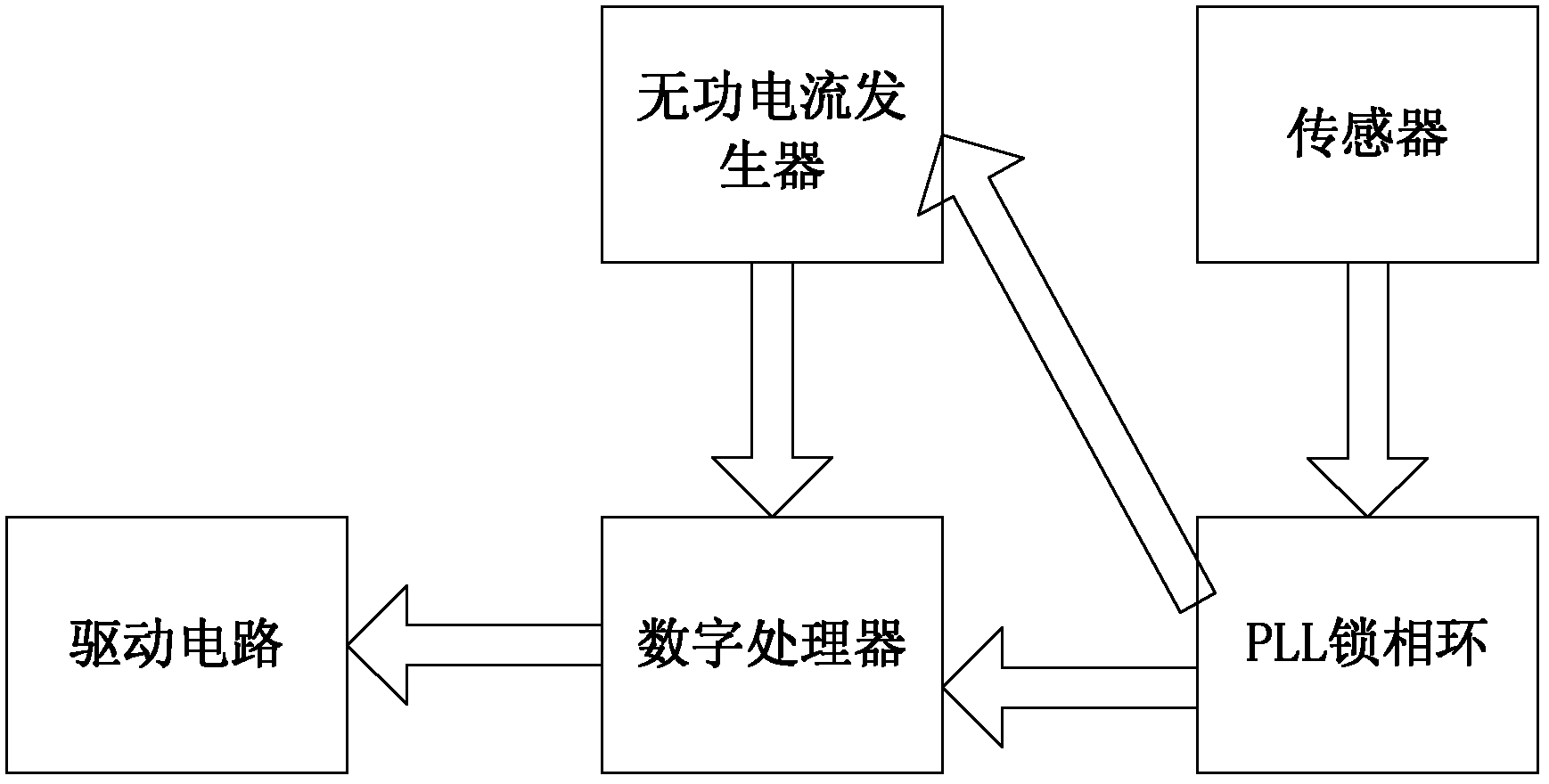Detection method of islanding effects with reactive current disturbance based on amplitude changes and device thereof
A technology of amplitude change and island detection, applied in the direction of fault location, etc., can solve the problems of high cost grid side installation, and achieve the effect of avoiding current disturbance and ensuring power quality
- Summary
- Abstract
- Description
- Claims
- Application Information
AI Technical Summary
Problems solved by technology
Method used
Image
Examples
Embodiment 1
[0027] An islanding effect detection method based on a reactive current disturbance with amplitude change provided by the present invention:
[0028] Step 1: Based on the fundamental reference current signal output by the previous stage control, a 90-degree phase-leading or lagging reactive fundamental current is correspondingly generated, and the current amplitude is proportional to the amplitude of the fundamental reference current;
[0029] Step 2: The reactive fundamental wave current undergoes an amplitude change every power frequency cycle, that is, a reciprocating periodic change of 20% -> 10% -> 0% -> 20% -> 10% -> 0%. The change range of the fundamental wave current should be less than 25% of the fundamental wave reference current;
[0030] Step 3: After the reactive fundamental wave current is output through the closed-loop control of the grid-connected inverter, a voltage will be formed on the output load, and the amplitude change of the reactive fundamental wave cu...
Embodiment 2
[0032] An islanding effect detection method based on a reactive current disturbance with amplitude change provided by the present invention:
[0033] Step 1: Based on the fundamental reference current signal output by the previous stage control, a 90-degree phase-leading or lagging reactive fundamental current is correspondingly generated, and the current amplitude is proportional to the amplitude of the fundamental reference current;
[0034] Step 2: The reactive fundamental wave current undergoes an amplitude change every power frequency cycle, that is, a reciprocating periodic change of 10% -> 5% -> 0% -> 10% -> 5% -> 0%. The change range of the fundamental wave current should be less than 25% of the fundamental wave reference current;
[0035] Step 3: After the reactive fundamental wave current is output through the closed-loop control of the grid-connected inverter, a voltage will be formed on the output load, and the amplitude change of the reactive fundamental wave curr...
Embodiment 3
[0039] A device based on an island effect detection method for reactive current disturbances with amplitude changes, which is sequentially connected by a sensor, a processing control module, and a drive circuit (PWM). The processing control module includes a PLL for processing the feedback signal collected by the sensor Phase-locked loop, reactive current signal generator and digital processor. The PLL phase-locked loop is specifically Phase Locked Loop. The reactive current signal generator is also realized by MCU chip. The digital processor can be produced by Microchip, an American microchip company. The model is dsPIC30F4011 digital processor, the output terminal of the sensor is connected to the PLL phase-locked loop, the output terminal of the PLL phase-locked loop is respectively connected to the digital processor and the reactive current signal generator, and the output terminal of the reactive current signal generator is connected to The digital processor, the PLL phase...
PUM
 Login to View More
Login to View More Abstract
Description
Claims
Application Information
 Login to View More
Login to View More - R&D
- Intellectual Property
- Life Sciences
- Materials
- Tech Scout
- Unparalleled Data Quality
- Higher Quality Content
- 60% Fewer Hallucinations
Browse by: Latest US Patents, China's latest patents, Technical Efficacy Thesaurus, Application Domain, Technology Topic, Popular Technical Reports.
© 2025 PatSnap. All rights reserved.Legal|Privacy policy|Modern Slavery Act Transparency Statement|Sitemap|About US| Contact US: help@patsnap.com



